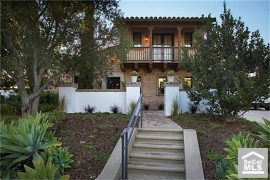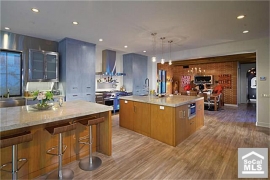Riverside County foreclosure investor Bruce Norris correctly called the housing bubble. In his latest interview, he discusses shadow inventory and its effect on prices.


Irvine Home Address … 3131 MICHELSON Dr #907 Irvine, CA 92612
Resale Home Price …… $400,000

I'll be alright, one way or another
So let me go, or make we want to stay
If this is it
Please let me know
Huey Lewis and the News — If This Is It
Is the decline in prices finally over? If this is it, who will tell you so?
Nobody will accurately predict the bottom in pricing. Many realtors will claim to have called the bottom. Of course, they call the bottom periodically, so like a broken clock that's right twice a day, eventually they will call it correctly.
 It's entirely possible the 4% interest rates currently available will cause prices to bottom this fall and winter, but I rather doubt it. What is also possible is that payment affordability may bottom this fall and winter. That scenario is far more likely than seeing an absolute bottom in prices. A $400,000 property purchased at a 4% interest rate is less expensive to own than a $350,000 property purchased with a 6% interest rate.
It's entirely possible the 4% interest rates currently available will cause prices to bottom this fall and winter, but I rather doubt it. What is also possible is that payment affordability may bottom this fall and winter. That scenario is far more likely than seeing an absolute bottom in prices. A $400,000 property purchased at a 4% interest rate is less expensive to own than a $350,000 property purchased with a 6% interest rate.
We are entering a time when the window to purchase is open. There are now properties available to purchase with a cost of ownership below rental parity. Are the conditions ideal for buying? No. But conditions are never ideal, and although it may be preferable to wait for higher interest rates and lower prices, it may take 5 to 8 years to see the next peak of the interest rate cycle. How long do you want to wait?
Personally, I am buying property in Las Vegas because prices are low and interest rates are low. I am likely to burn up all my savings in the process. I will look to buy two years from now in Orange County, but I may be forced into a less than 20% down loan. For me, buying the cashflow properties is more important than buying a primary residence. I may always be Irvine Renter.
Housing crisis is not over
October 1st, 2011, 12:26 am — posted by Jon Lansner
Southern California real estate investor Bruce Norris was one of the few people who saw the housing debacle coming.
On Oct. 14th, Norris will host a panel discussion — “I Survived Real Estate 2011” –among real estate experts at the Nixon Presidential Library. The event — featuring Doug Duncan of Fannie Mae; Vicki Golder of the National Association of Realtors; Debra Still, of the Mortgage Bankers Association; Sara Stephens of The Appraisal Institute; Sean O’Toole of Foreclosure Radar; and author Eric Janszen — is a fundraiser for the Susan G. Komen breast-cancer fight. (DETAILS HERE!)
We figured we’d ask Norris for his latest view of real estate’s plight …
Us: Is it over yet in O.C. and/or SoCal?
Bruce: No, unfortunately it isn’t over. There are many property owners delinquent by over 18 months who have yet to be foreclosed on. The amount of inventory in the MLS is misleading. It looks like a much healthier market than it is. Someday soon, these delinquent properties will hit the market either as a short sale or an REO. In Riverside, about 65% of properties sold are either short sales or REOs. Former owners with a foreclosure or short sale on their record don’t re-enter the market as a buyer because they can get financing. For every 1,000 sales, Riverside needs to find 650 new buyers to replace those that are now non-buyers. For Orange County, it’s closer to 30%, or 300 new buyers. Both areas are seeing all-time record numbers when comparing percentage of distressed sales to normal sales. That ratio prevents price support partially because each sale removes a formerly capable buyer from the market.
IHB: I have mentioned in other posts that we are now entering the liquidation phase of the housing bubble. The first drop was caused by the smaller loan balances resulting from a return to sane lending standards. The second drop will be caused by the liquidation of the huge supply of homes purchased by people who either can not or chose not to support a mortgage.
Banks have been successful so far in limiting the supply on the market locally to hold up prices. The impact has been a long-term reduction in sales volumes because the price levels they are trying to sustain is not affordable with local incomes. The only way to increase sales velocity and inventory absorption is to lower prices. This isn't rocket science.
Until lenders are willing to lower their prices, sales volumes will remain low, and the inventory overhang will slowly bleed the prices out of the market. Expect to see a pattern of spring rallies — with realtors calling the bottom each time — and fall plunges that take out the lows from the previous year. Over the next 5 years, this pattern will repeat until one of the fall plunges is the last. Timing the bottom will not be critical because the ensuing appreciation will be tepid at best.
Us: How bad could it get … again?
Bruce: How bad it gets will depend on how the government decides to handle the “shadow inventory” situation. By shadow inventory, I mean anything 90 days late through bank owned property. Up until now, the priority has been to find a new owner-occupant to buy the house. Since mathematically that won’t work, the most successful plan would include selling local investors properties able to be rented by the former owners. If investors aren’t invited to the party, then you could have a second dip in prices.
IHB: All GSE, HUD, and FHA liquidations have been geared to sell to owner occupants. Since the stated policy goals of the government are to maximize home ownership, it should be expected that government-controlled entities would show a preference for owner occupant sales. However, as Bruce Morris points out, the pool of buyers simply isn't large enough to absorb the inventory. Despite government resistance to the idea, cashflow investors will be the buyers who ultimately put a floor under house prices.
Us: Do you think the presidential political discourse will be a factor in the 2012 housing market?
Bruce: Unfortunately, yes. When political agendas trump common sense, distortions occur.
IHB: I am concerned will will see more lunacy out of Washington, particularly from the Obama administration who must pander to the extreme left. We might see principal reduction, underwater refinancing, loan modification squatting, government insured zero-down loans or any of a number of bad ideas which will simply prolong the process or encourage the worst in borrower behavior.
Us: Do any political proposals being floated right now stand out as extremely helpful or harmful to real estate?
Bruce: There’s one proposal that’s especially harmful. There is a belief that when a buyer puts up a down payment of 20%, the likelihood of them making their payment increases dramatically. This line of thinking was included in a new risk-retention proposal introduced as part of the Dodd-Frank financial reforms. In the proposal, financial institutions retain capital reserves of 5% of all but the safest mortgages, also known as the Qualified Residential Mortgages (QRMs).
Many of the details of this proposal are still in the works but the problem is the assumptions underpinning this proposal are wrong. A larger down payment does not significantly decrease the losses experienced by the lender. As a matter of fact, looking at a chart from 1980 to 2000, there is little difference between the performance and the losses from a 20% down program and a zero-down VA loan program.
IHB: Bruce Norris is wrong. I think he has been reading the propaganda from the lending lobby. The accurately presented data clearly shows a large increase in defaults when the down payment is less than 20%; in fact, it more than doubles.

We may soon get the most stringent loan guidelines to “protect” us against something that history proves doesn’t exist. As I said, when political agendas trump common sense, distortions occur.
IHB: Common sense says less than 20% down should have higher default rates. It was a lobby of lenders who put together a study to distort this truth, and Mr. Norris has fallen victim to this false information presented for political reasons. Be careful what you read. The proposed guidelines will protect us from something history has shown does exist and is very costly.
Regulators are now overreacting to the damage stated-income and subprime did to the market. However, now we’re at historically high affordability levels, historically low interest rates, and a market that is already struggling to find the next pile of first time homebuyers.
IHB: Regulators are not overreacting. In fact, they are not going far enough. We don't need more housing bubbles. Regulators should not be concerned with maintaining current pricing, they should be concerned with preventing loan terms from propagating in the market which do not sustain ownership. Stated-income, interest-only, negative amortization, 100% financing, and a plethora of other terms have proven fatal to home ownership. Regulators should be working to craft policies which prevent these Ponzi loans from proliferating. So far, I haven't seen anything substantive that will prevent the next housing bubble.


Us: If you had a magic wand and could do one thing overnight to help the housing market … what would it be?
Bruce: We recently responded to HUD’s request for information seeking input on how they might handle their portfolio of foreclosures. I suggested a three-pronged solution that: helps three underserved markets; could be implemented quickly using strategies FHA has used in the past; and utilizes current infrastructure already in place.
1. No-down program. Launch a new no-down loan program that mirrors the qualification guidelines set forth by the no-down VA program. This serves a younger market that wasn’t involved in the boom; they still have intact credit but lack the down payment requirement. Think of this as a varied version of the $8,000 tax credit we tried in 2008/2009 which, in many areas, created a no-down situation.
He is joking, right? Zero-down loan programs are a Ponzi virus. They create the worst possible incentives to gamble with the banks — or in this case the taxpayers — money. The solution to a diminished buyer pool is not to bring back failed loan programs to find more owner-occupants. There are only so many owner-occupants who can sustain ownership, and those without at least a 3.5% down payment have proven too irresponsible to sustain home ownership. If we implemented this idea, we would merely repeat a mistake of the housing bubble and create a fresh wave of delinquencies in defaults.
2. Bring back simple assumptions. For this program only, bring back the simple assumption policy FHA had in the 1980s. Should the buyer in part one of this solution default, the loan could be made current by an individual or family that may not have perfect credit due to a past foreclosure or short sale. An investor might also participate. In either case, the new buyer would make the loan current and send in a check to take over the loan. This saves the credit of buyer one and also opens up the market to two underserved markets.
This would effectively open up the market for hard-money second loans at onerous interest rates which would greatly benefit investors at the expense of the poor. This would be a ripoff like most lending programs to the poor are.
3. Trustee sale back payments only. Should buyer two fail, at the trust sale, instead of the opening bid being the full amount owed on the property, make the opening bid for this program the back payments and fees to make the loan current. Investors would gladly take over low interest rate financing and most likely create an overbid situation. The surplus funds could go to insure and pay for the administration of the entire program.
This solution only works if the first is not underwater and the current interest rate is lower than the interest rate on the first mortgage. Those conditions don't exist today, put if he is looking to kick the can down the road, making the first mortgage into an assumable loan and the late payment and fees into a second might have some value to the banks.
Not only does this three-part solution help three underserved markets, it also puts the real estate industry (Realtors, appraisers, title, escrow, construction, etc.) back to work. Having clarity on how the inventory will be handled and clarity on financing will also make buyers, investors, and lenders more comfortable and willing to participate. Also, the backlog of inventory could finally clear — and maybe builders could get back to work in the foreseeable future.
 IHB: He is correct. If we implement some of these foolish ideas, would would inflate a mini-bubble which would extend the pain of the housing market another decade but create some short-term benefit to the real estate industry.
IHB: He is correct. If we implement some of these foolish ideas, would would inflate a mini-bubble which would extend the pain of the housing market another decade but create some short-term benefit to the real estate industry.
Most of the policies proposed to solve the non-problem we have with foreclosures involve re-inflating the bubble in one form or another. IMO, we would be far better off letting the market correct itself and regain the firm footing of fundamental values supported by stable debt and real incomes.
More than 50% off in the North Korea towers
By far the worst investments of the housing bubble were the condos apartments in the Marquee at Park Place. It was so bad, I feel sorry for all the people who believed the hype and lost everything they invested.
From my way of looking at the value of real estate, this was the most obvious sign of the real estate bubble. With an HOA of about $1,000 a month, these properties were worth about $250,000 back in 2006 when interest rates were 6.5%. With the cheap units selling for over $600,000, there was no explanation for the pricing other than mass insanity.

Today's featured property was not one of the cheap ones on the lower floors. This ninth floor unit sold for $843,000. Today, the bank is hoping for $400,000. That is more than 50% off.
——————————————————————————————————————————————-
This property is available for sale via the MLS.
Please contact Shevy Akason, #01836707
949.769.1599
sales@idealhomebrokers.com



Irvine House Address … 3131 MICHELSON Dr #907 Irvine, CA 92612
Resale House Price …… $400,000
Beds: 2
Baths: 2
Sq. Ft.: 1492
$268/SF
Property Type: Residential, Condominium
Style: One Level, Modern
View: City Lights, Panoramic, Yes
Year Built: 2006
Community: University Park
County: Orange
MLS#: S675239
Source: SoCalMLS
On Redfin: 1 day
——————————————————————————
This unit is a 2 bedroom 2 bath condo, all on one level, located in Marquee at Park Place in beautiful Irvine. Living at its finest. City lights and panoramic views! Desirable location for shopping, dining, parks, churches, access to freeways and public transportation. Easy, short drive to the beach areas.
——————————————————————————————————————————————-
Proprietary IHB commentary and analysis ![]()
Resale Home Price …… $400,000
House Purchase Price … $843,000
House Purchase Date …. 2/2/2006
Net Gain (Loss) ………. ($467,000)
Percent Change ………. -55.4%
Annual Appreciation … -12.8%
Cost of Home Ownership
————————————————-
$400,000 ………. Asking Price
$14,000 ………. 3.5% Down FHA Financing
4.00% …………… Mortgage Interest Rate
$386,000 ………. 30-Year Mortgage
$148,712 ………. Income Requirement
$1,843 ………. Monthly Mortgage Payment
$347 ………. Property Tax (@1.04%)
$0 ………. Special Taxes and Levies (Mello Roos)
$83 ………. Homeowners Insurance (@ 0.25%)
$444 ………. Private Mortgage Insurance
$1125 ………. Homeowners Association Fees
============================================
$3,842 ………. Monthly Cash Outlays
-$408 ………. Tax Savings (% of Interest and Property Tax)
-$556 ………. Equity Hidden in Payment (Amortization)
$19 ………. Lost Income to Down Payment (net of taxes)
$70 ………. Maintenance and Replacement Reserves
============================================
$2,967 ………. Monthly Cost of Ownership
Cash Acquisition Demands
——————————————————————————
$4,000 ………. Furnishing and Move In @1%
$4,000 ………. Closing Costs @1%
$3,860 ………… Interest Points @1% of Loan
$14,000 ………. Down Payment
============================================
$25,860 ………. Total Cash Costs
$45,400 ………… Emergency Cash Reserves
============================================
$71,260 ………. Total Savings Needed
——————————————————————————————————————————————————-

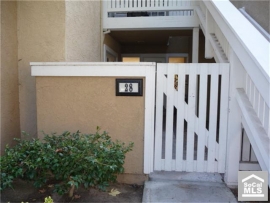
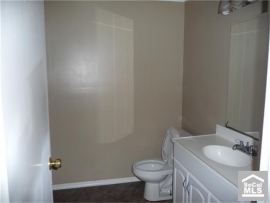
.png)


 A group whose original payment motivations has been lost? LOL! That is the best euphemism I have read in ages. The group they are talking about was motivated to pay as long as prices were going up and they were given more Ponzi debt to make their payments. Once the HELOC money was not forthcoming, they lost their motivation. ~~ giggles to self ~~
A group whose original payment motivations has been lost? LOL! That is the best euphemism I have read in ages. The group they are talking about was motivated to pay as long as prices were going up and they were given more Ponzi debt to make their payments. Once the HELOC money was not forthcoming, they lost their motivation. ~~ giggles to self ~~.png)





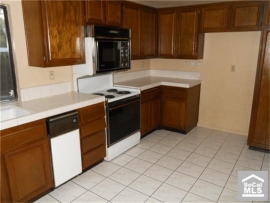







.jpg)
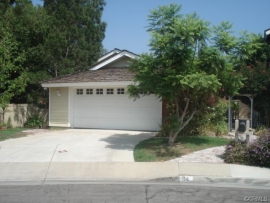
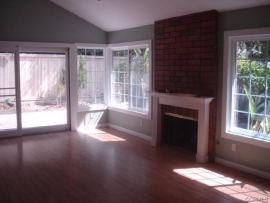


 Housing woes are still the primary cause of our weak economy. An entire industry is sitting on the sidelines.
Housing woes are still the primary cause of our weak economy. An entire industry is sitting on the sidelines. 


 The housing bust in California has enabled many renters to buy properties closer in to employment centers. The commute through the valley on the 91 is no longer a necessary price to pay to have a nice house for many who work in Orange County.
The housing bust in California has enabled many renters to buy properties closer in to employment centers. The commute through the valley on the 91 is no longer a necessary price to pay to have a nice house for many who work in Orange County.




